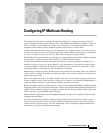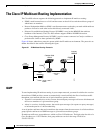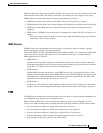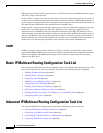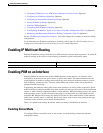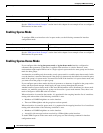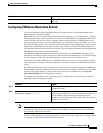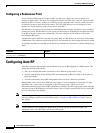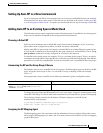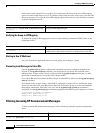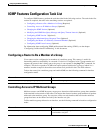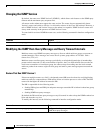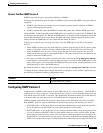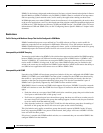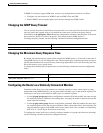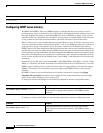
Configuring IP Multicast Routing
Configuring Auto-RP
IPC-407
Cisco IOS IP Configuration Guide
Setting Up Auto-RP in a New Internetwork
If you are setting up Auto-RP in a new internetwork, you do not need a default RP because you configure
all the interfaces for sparse-dense mode. Follow the process described in the section “Adding Auto-RP
to an Existing Sparse Mode Cloud,” except that you should omit the first step of choosing a default RP.
Adding Auto-RP to an Existing Sparse Mode Cloud
The following sections contain suggestions for the initial deployment of Auto-RP into an existing sparse
mode cloud, to minimize disruption of the existing multicast infrastructure.
Choosing a Default RP
Sparse mode environments need a default RP; sparse-dense mode environments do not. If you have
sparse-dense mode configured everywhere, you need not choose a default RP.
Adding Auto-RP to a sparse mode cloud requires a default RP. In an existing PIM sparse mode region,
at least one RP is defined across the network that has good connectivity and availability. That is, the ip
pim rp-address command is already configured on all routers in this network.
Use that RP for the global groups (for example, 224.x.x.x and other global groups). There is no need to
reconfigure the group address range that RP serves. RPs discovered dynamically through Auto-RP take
precedence over statically configured RPs. Assume it is desirable to use a second RP for the local groups.
Announcing the RP and the Group Range It Serves
Find another router to serve as the RP for the local groups. The RP-mapping agent can double as an RP
itself. Assign the whole range of 239.x.x.x to that RP, or assign a subrange of that (for example,
239.2.x.x).
To designate that a router is the RP, use the following command in global configuration mode:
To change the group ranges this RP optimally will serve in the future, change the announcement setting
on the RP. If the change is valid, all other routers automatically will adopt the new group-to-RP mapping.
The following example advertises the IP address of Ethernet interface 0 as the RP for the
administratively scoped groups:
ip pim send-rp-announce ethernet0 scope 16 group-list 1
access-list 1 permit 239.0.0.0 0.255.255.255
Assigning the RP Mapping Agent
The RP mapping agent is the router that sends the authoritative discovery packets telling other routers
which group-to-RP mapping to use. Such a role is necessary in the event of conflicts (such as overlapping
group-to-RP ranges).
Command Purpose
Router(config)# ip pim send-rp-announce type number
scope ttl-value [group-list access-list]
[interval seconds]
Configures a router to be the RP.



